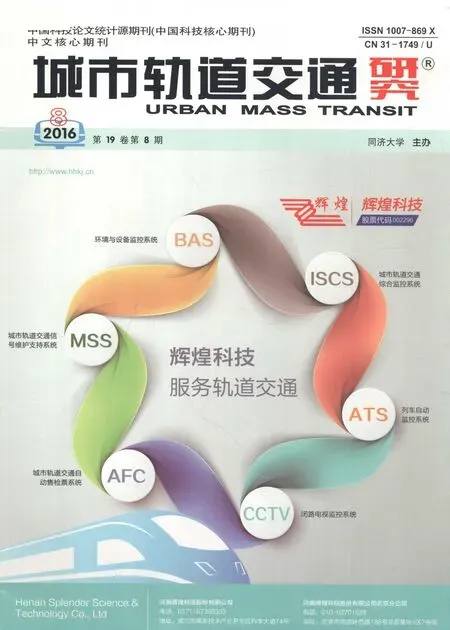(Continued from Special Commentary)
?
(Continued from Special Commentary)
planning.In addition,a group of small towns newly emerge. Then,the “1+1>2” aggregate effect would be produced.
On May 11,2016,the executive meeting of the State Council approved “The Development Plan of the Urban Agglomerations in the Yangtze River Delta”.The governments of Shanghai Municipality,Jiangsu Province,Zhejiang Province,the Anhui Province and the relevant departments are required to cooperatively build the world-class urban agglomerations with global influence,radiating and bringing the development of the surrounding areas and the central and western regions,so as to enhance the national competitiveness.
The urban agglomerations in the Yangtze River Delta (hereinafter referred to as “the Yangtze River Delta”) includes Shanghai Municipality,9 cities in Jiangsu Province,8 cities in Zhejiang Province and 8 cities in Anhui Province.The regional area (211 700 km2) accounts for 2.2% of the total land area of the whole country.The planned populations account for 11% of the total population of the whole country.In 2014,the Yangtze River Delta′s Gross Domestic Product (GDP) accounted for 18.5% of the whole country′s GDP.It is expected that by 2020,the Yangtze River Delta′s GDP will account for 21% of the whole country′s GDP,and its population will account for 11.8% of the country′s total population.
The urban agglomerations in the Yangtze River Delta are internationally recognized as one of the six largest urban agglomerations with world-class,and is committed to become the world-class urban agglomerations with global influence by 2030.In this development process,as a main artery of these urban agglomerations,the rail transit network plays a decisive role and concerns the overall situation.In foreign countries,the density of population and the commuting rates are regarded as the two important parameters of the urban agglomeration development level.And these two parameters are just closely related to the degree of the rail transport development.To this end,the following suggestions that the hierarchy structure of rail transit networks of the urban agglomerations of the Yangtze River Delta and its type-selection criteria are put forward:
1) Between the core cities (Shanghai,Nanjing,Hefei,Hangzhou and Ningbo),in order to be full use of the high speed railway lines,the point-to-point high-speed trains will be run,and their appropriate running-speed should be 250 km/h or above.
2) Between the core cities and the node cities and between the node cities,making use of existing railway lines reconstructs and expands the intercity rail transportation or it could be newly built,covering small towns,medium and small cities with more than 50,000 people within the urban agglomeration.And their appropriate running speed is 120~200 km/h.In those economy-developed countries,the production base of components and parts of the manufacturing industry often locates in small towns,in which,there is abundant human resources,land resources and water resources.By intercity rail,small towns can be easily integrated into large cities,providing supporting services.
3) Between main urban areas of core cities and new town or satellite cities,existing railway lines could be made use of or suburban railways could be newly built (such as Shanghai Rail Transit Line 22 from Shanghai South Station to Jinshan,that is,Jinshan Railway Line).And their appropriate running speed is 80~160 km/h.
4) In main urban areas of core cities,it is appropriate to develop urban rail transit.Those technology modes,such as metro,light rail and modern tram,etc.,could be chosen. Their maximum operating speed is respectively 80,70,and 60 km/h.
Besides,as a rail transportation network of world-class urban agglomerations,it must possess both the clear hierarchy and the interconnection.Meanwhile,it must make up the short board and perfect its functions.According to the development reality of China′s comprehensive transportation,the future transport development of urban agglomerations should focus on the intercity rail transit and the suburban railways. For this,the followings should be considered:
On a nationwide scale,the economic disparity is mainly the difference between the east and the west.For Jiangsu Province,the economic gap is mainly the north-south gap.Therefore,the short board of the intercity transportation of the urban agglomerations in the Yangtze River Delta is just the constructions of the intercity railways in Northern Jiangsu and its channel crossing the Yangtze River.Recently,the State Railway Administration has proposed to build a Shanghai-Chongming Island-Jiangsu Qidong railway passage. It is the finishing touch of the pen. And it should be implemented as soon as possible. This passage connects the north-south high-speed rail along the coast of our country with the north-south high-speed rail along the Yangtze River at the Yangtze River Estuary.Shanghai Railway East Station (Shanghai Railway Pudong Station) should also start to be built and be extended to Pudong International Airport. In this way,not only the problem that there is lack of rapid rail transit passage between the two big airports in Shanghai could be solved,but also at the same times the Pudong New District with both the free trade area and the Pudong International Airport would have a high-speed rail hub that could directly pass through to all parts of the country.
(Translated by SUN Zheng)

